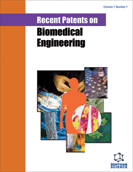Abstract
Class II malocclusion is considered as the most frequent treatment problem in orthodontics. Maxillary molar distalization is usually applied to correct this type of malocclusion, however with some drawbacks. The present article presents a patented (German patent No. 10 2006 033 774; U.S. patent application No. 11/822,799 pending) miniscrew implant supported “Advanced Molar Distalization Appliance” (AMDA) which was invented by the author, and which is a novel technique aiming to eliminate the problems of conventional and noncompliance distalization appliances used for the correction of Class II malocclusion, such as anchorage loss of the anterior dental unit in terms of mesial movement of the premolars and canines, and proclination of the incisors, as well as distal tipping and rotation of the molars. During molar distalization AMDA remains invisible, while afterwards the same appliance can provide the necessary anchorage for the subsequent anterior teeth retraction which is performed in conjunction with conventional fixed appliances. This article describes the general biomechanical principles, clinical applications and advantages of the AMDA. Initial treatment results highly support this new approach, since the miniscrew implant supported AMDA can be used efficiently, not only to distalize maxillary molars, but also to subsequently retract the anterior teeth without relying on patients ’ cooperation; in other words for the complete management of Class II malocclusion.
Keywords: Class II malocclusion, class II orthodontic treatment, maxillary molar distalization, advanced molar distalization appliance, miniscrew implants, temporary anchorage devices
 19
19

